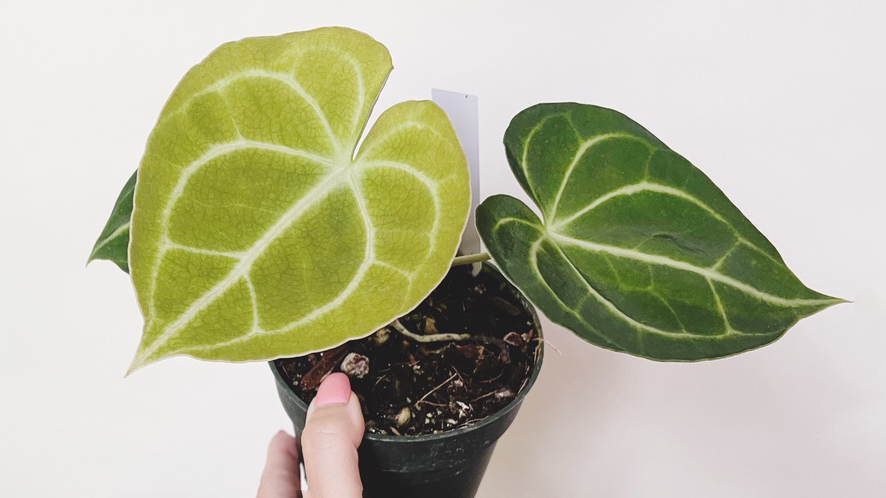
Anthurium Clarinervium: Care Tips
Anthurium are a family of plants consisting of thousands of different varieties. Stunning heart-shaped velvety leaves with prominent venation made them highly sought after and one of the most popular collector species over the past few decades. When given the correct care and conditions they love to reward everyone with beautiful and striking new leaves and flowers.
Clarinervium is often considered a "beginner's anthurium," which makes it a great and unintimidating plant to start with for those looking for building an anthurium collection.
First off, it does great in ambient humidity and does not require a greenhouse cabinet. Secondly, it can tolerate some neglect: will not shrivel up and die if underwatered and won’t drop dead from the soil being occasionally left soggy.
However, if you want your Clari to thrive there is a few simple rules to consider:
1. Light. And lots of it: there is (or will be) an entry on the Blog about ‘bright indirect’ and other light conditions, however it is a rule of thumb to remember that anthuriums need above average amounts of light to truly showcase their magnificent foliage. Opt for an east-facing window or diffused south/west exposure Sunrays. It is fairly easy to tell if your plant is getting scorched by harsh light: the leaves will start having faded brown patches which will decay if left unattended. If your space is short on windows, opt for a growlight: anthuriums will happily thrive under a full spectrum artificial light source.
Important: avoid placing your plants in dark corners: it will not only slow the growth, but will cause the plant to send stress signal and become sick or infested with pests!
2. Water: A good rule of thumb is to feel the soil and if the top inch or two are dry to the touch - your Anthurium is thirsty. Water the plant until the saucer is full, let it soak for up to 30 minutes and dump any excess water. Clarinervium will forgive you if you let it dry out completely every now and then, but long periods of drought might cause the plant to decline.
3. Soil: Anthuriums are epiphytes, meaning they have thick orchid-like roots and like to hold on to available surfaces such as tree bark and branches. Which doesn’t mean you have to provide a tree, but adding some chunky media to your substrate will be greatly appreciated: tree bark is best, but clay pebbles and chunky coco husk will do just as well.
Pro Tip: I always suggest to chose rare varieties carefully and purchasing them from trusted growers: it doesn’t hurt to ask which conditions the plant is being kept in, what’s the basic requirements and if in doubt, ask for an advise on where to place it in your house. You might pay a few dollars more buying from a private sellers, but will receive a healthy pest-free plant and some tips on how to keep it happy. Always pay attention at the soil your leafy friend comes in: a good soil for anthurium will always have plenty of perilite and bark, while mushy fibrous peat without additives is a good sign to think twice before purchasing from the particular seller in the future.
